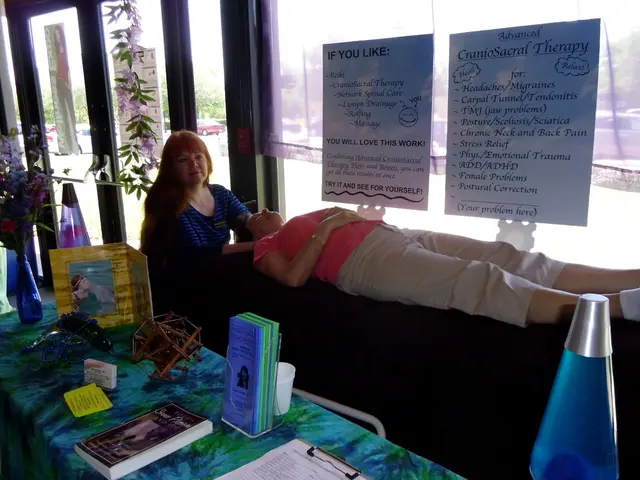Brain's Capacity for Change and Adaptation in Response to Physical Activity: Maintaining Cognitive Acuity
Exercise plays a significant role in maintaining and improving brain health as we age. By promoting neuroplasticity, or the brain's ability to adapt and change, exercise helps reverse the effects of brain aging and cognitive decline.
According to scientific studies, exercise primarily achieves this by enhancing neurogenesis, the creation of new neurons, and strengthening the connections and flexibility of communication between brain cells. This process is largely mediated by increased levels of brain-derived neurotrophic factor (BDNF), a key protein that promotes the growth, survival, and differentiation of neurons.
Physical activities that raise heart rate, such as walking, running, or resistance training, are particularly effective. They increase blood flow to the brain, improving energy metabolism and supporting neural health. Exercise-induced BDNF boosts synaptic plasticity, enhances hippocampal neurogenesis, and stimulates other growth factors like vascular endothelial growth factor and IGF-1, all of which contribute to brain repair and growth.
These changes collectively support stronger cognitive function, memory, and executive functions, which tend to decline with aging. Beyond neuroplasticity, exercise helps reduce brain inflammation and supports vascular health, preserving cognitive abilities and helping mitigate age-related neurodegenerative processes.
The total amount of hours spent exercising seems to be particularly relevant for the cognitive effects of exercise on the brain. Most significant gains in cognitive effects begin to occur after about 50 hours of exercise, which is an average of 2 to 3 hours every week for 4-6 months. SMART goals (Specific, Measurable, Attainable, Relevant, Time-Bound) are crucial for setting and achieving exercise goals.
It's important to note that the 'best' exercise regimen for promoting brain health may vary between individuals. Regular exercise can promote faster processing of mental tasks and better problem-solving skills. However, adherence, or showing up consistently, is a major challenge in maintaining an exercise regimen.
Dr. Joyce Gomes-Osman, a rehabilitation neuroscientist and Assistant Professor at the University of Miami Miller School of Medicine with affiliations at Harvard Medical School, offers three main pieces of practical advice to improve brain plasticity through exercise. First, various types of exercise can contribute to improved thinking abilities. Second, start with a safe and gentle routine, and consider consulting a physician or physical therapist if needed. Lastly, the optimal amount of exercise for brain health may not be a one-size-fits-all approach.
Increasing neuroplasticity can help prevent the loss of cognitive skills as we age. Loss of neuroplasticity is commonly associated with neurodegenerative diseases such as Alzheimer's, Parkinson's, and mild cognitive impairment. Scientific studies are ongoing to understand the effects of exercise on different areas of the brain.
Regular exercise can also help reduce the risk of dementia as people age by enhancing complex brain functions such as interpreting sounds. However, it's important to note that a scientific study platform test cannot diagnose dementia or predict the risk for cognitive decline. Instead, it can help researchers understand how normal, healthy brains perform at different ages and aid in the evaluation of Alzheimer's patients.
In conclusion, by increasing BDNF and related growth factors, improving cerebral blood flow, and reducing inflammation, exercise promotes brain adaptability and regeneration, thereby counteracting brain aging and cognitive decline. As we continue to exercise, more long-term benefits are likely possible.
Science indicates that regular exercise, notably activities raising heart rate like walking, running, or resistance training, bolsters brain-derived neurotrophic factor (BDNF) levels and enhances neuroplasticity, the brain's adaptability and change, in the context of precision aging. This neuroprotective effect reduces the risk of age-related cognitive decline and potentially neurodegenerative diseases, making it a vital component of health-and-wellness and fitness-and-exercise regimens.




